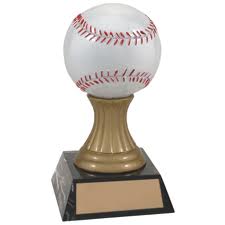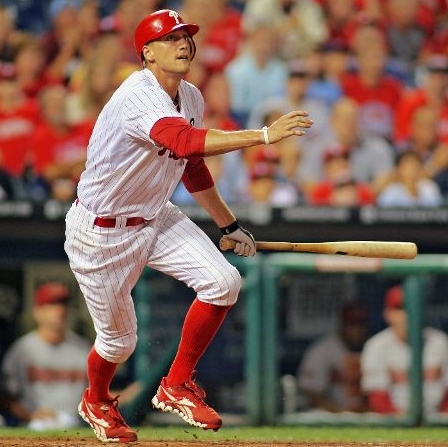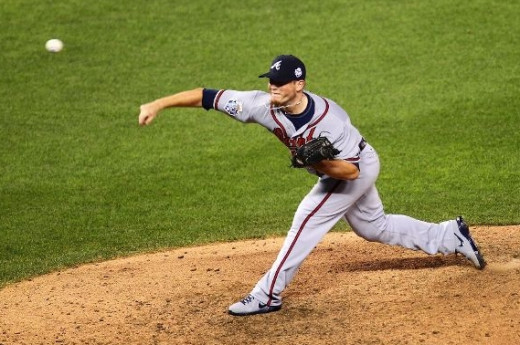How to Win Your Fantasy Baseball League

If you are interested in winning your fantasy baseball league then you have come to the right place. Listed below are ten strategies for winning your fantasy baseball league. These lessons have been learned through trial and error over my fantasy baseball career, mostly error I must say, and they provide a philosophy for drafting and managing a fantasy baseball team that will consistently contend for the title. These ideas are intended primarily for 5 x 5 rotisserie leagues, but can also be used in head-to-head formats. The advice is also based mainly on my experience with draft style leagues, but some of the techniques can also be applied to auctions. These are proven tools and if you apply them I think you will have no problem contending for your league's title.
1) Study hard and create a personal cheat sheet
You have to do your homework. There's no way around it and there are no short cuts. I have tried to cram before the draft in past years but I always ended up mired in indecision, floundering, and making bad picks. My best drafts have come after I have prepared and put the most time in studying. My current technique is about a month before my draft I read three fantasy magazines and try to digest as much information as possible about the players. I then take the information and create my own excel spread sheet with rankings based on my projected stats for each player. The rankings are based on a combination of projected statistics and gut feeling about the player. Is he ascending in his career or on the downward side? Is he in the 27-28 prime age range when baseball players have their best statistical seasons? I also look at injury history and multi-position eligibility. I hate it now when other owners come to the draft with fantasy magazines and spend ten minutes flipping through them looking for a player while the clock is ticking and everyone is waiting. If you have put in the time and effort you should be able to make your pick in about 10 seconds.
2) Ignore Spring Training
Hunter Pence

Well don't ignore it completely, but I recommend paying attention only enough to stay informed of key injuries in preparation for your draft. The main problem with spring training is that everything is apple pie and blue sky. It is a time of hope and optimism for every player and every team, which is great for the casual fan but is detrimental to evaluating players for their fantasy potential. So, don't buy into the hype! Take my word for it, I have been burned several times in the past by spring training mania. Corey Hart in 2009 had 7 homers in spring and everyone said it signaled a sure breakout season and his imminent arrival in the 30-30 club. As you would guess, I had to have him and paid the price as he had his worst season with only 12 homers and 11 steals and seemed to regress as a hitter. Then Hunter Pence got me in 2010 when he hit 8 home runs in training camp and seemed ready for his big year. Again I got caught up in the euphoria of a potential 30 homer breakout season. Not surprisingly he started the season by going 14 for 71 with only one home run and struggled for much of the first half. Sadly, I never seem to learn from my mistakes and drafted Dee Gordon in 2012 after his .400 hitting, high stolen base spring training. He seemed poised for an incredible year, but again you can already guess what happened: a .228 batting for the season and eventually losing his job to Hanley. Spring hot streaks just don't seem to consistently carry over into the regular season. Injuries are a different story and should be your main concern in spring, so stay focused on them as they definitely affect how a player starts the season. Everything else is in your best interest to forget on draft day.
3) Covet the middle of the draft order
I have found the best draft position is either the 5th or 6th slot. With these positions you can still get one of the top players in the first round, but you are able to stay on top of the draft mood as it progresses. By this I mean if there is suddenly a run on closers you will have time to react before all the decent ones are selected. If you have one of the end positions you could be waiting as much as 18 picks before your next selection and it can be a painful experience to scratch one good player after another off your cheat sheet before your next pick arrives. In some leagues the order is set and you have no ability to change it. In others, however, you can often make a trade with another owner to get one of these desirable positions. If this is an option then you should try to make it happen. Also keep a poker face during the draft. If you like a player, don't let the other owners know it. The flip side of this is to observe the reactions of others on draft day. If you pick a player and someone makes a big commotion about it, make a mental note and file it away as you might be able to use it to your advantage in a trade later in the season when you need help. Another guideline about the draft is that in rotisserie leagues I tend to avoid pitchers the first four rounds. In head-to-head format, however, it is just the opposite. I typically draft starting pitchers in the first 4 to 5 rounds.
4) Pay for saves
Craig Kimbrel

This one isn't as that important if you play in an AL-NL combined league where there are 30 closers to chose from, but if you are in either an NL or AL only league than saves become much rarer and there are often runs on closers during the draft. Most fantasy gurus on ESPN.com, CBSsports.com, and Yahoo.com will tell you not to draft closers early and that you will always be able to get saves later in the season. Their reasoning typically is based on the volatility of the position and that on many teams the closer that starts the season is not the same one that ends it. However, in my NL-only league experience I have found it best to draft two solid closers and sometimes three if I have the opportunity. In my league, closers start going early, typically starting in round five. If you don’t follow suite and decide to wait you usually end up with one of the scrubs. Then after a month you often find yourself dead last in the category and scrambling to make a trade. Also, you may not be able to pick up the new closer when he takes over the role. There are 9 or 11 other owners that are after him as well and one may already have him on his bench or may get him on waivers before you do, so there is no guarantee with this strategy. I have also found other owners very willing to make solid trade offers extra closers I may have on my roster. So, ignore the experts and pick two solid closers on draft day.
5) Stolen bases are important too
Great Baseball Books
Another cliche I read a lot from the fantasy gurus is similar to the one for saves and that you shouldn't draft players solely for stolen bases. The reason is they are easy to come by as players get called up later in the season. My experience is they are similar to saves and that they should be valued much more highly, almost on the same level as home runs. For example, a player like Michael Bourn that will get 50 steals is valuable commodity. He may not be as productive as a 50 homer player in terms of RBI and runs, but when he is on your team he can help you to easily finish first in stolen bases. Also, this notion that you can easily pick up players doesn't always work if you are in a competitive league. The other nine owners are also putting in waiver claims so you may or may not be able to get the player you want when he is called up. Also, if you neglect a category from the start of the season, like steals, you often fall behind to the point where it becomes hard to catch up and you end up last in the category at the end of the year. So, I tend to rank players like Michael Bourn higher than you see on most standard cheat sheets.
6) There are no friends in fantasy
You need to be ruthless to win your fantasy baseball league.
By this I mean you need to be ruthless and prey on the desperation of your fellow owners and here is how you do it. After the first month of the season look for reliable veterans that are off to slow starts. Fantasy owners easily become desperate and often become willing to trade these players out of disappointment and frustration. For example, in 2012 I was frantically trying to trade Yovani Gallardo in May just to stop the pain of watching him get shelled. He had a miserable start and I offered him up to everyone in my league. Even though the trade offers were reasonable they were all turned down. Thankfully Gallardo righted the ship and finished the year strong with a 17-10 record. I was also looking at Aramis Ramirez as a good buy-low candidate. He had only 4 homers through May and everyone was talking off his demise. I was not able to get him in a trade and he also finished strong and ended up the season with 26 homers. My point is to always be on the watch for reliable veteran players that get off to slow starts because you can often get them dirt cheap. The opposite of this is to sell a player high. I admit, this is much harder to do than buying low, but there are so many cases of players that have a hot first half and then bomb in the second. My best example is Ubaldo Jimenez in 2010. He had an epic first half where he went 14-1 with a 2.27 ERA and 1.08 WHIP. It crossed my mind to trade him high at the All-Star break, but I couldn’t pull the trigger. As you guessed, he faded in the second half with only a 5-7 record and 3.59 ERA. This takes guts to make this kind of trade because you always wonder if the player is going to continue on and have “one of those years”. Also look for owners that are fans of specific teams as they tend to load up their rosters with players from their favorite clubs. We have two in my league, one tries to draft all Cardinals and the other all Cubs. So, the idea here is that if you happen to end up with a Cub or Cardinal player, or even better, multiple Cub or Cardinal players, you can often package them together in trades to these owners for higher quality players. You need to be ruthless.
7) Look for the veteran comeback sleeper
Adam LaRoche

There is one in every draft, you just have to find him. In 2010 it was Aubrey Huff, in 2011 it was Lance Berkman, in 2012 it was Adam LaRoche, and in 2013 it was Michael Cuddyer. Who will it be this season? I recommend you look at some of my other articles for clues, but there is usually one or more out there each season. They most likely are with a new team and have been deemed washed up by the mainstream fantasy press. They often go undrafted or if drafted at all it occurs after round 15. Lance Berkman went undrafted in my league in 2011 and Aubrey went in round 16 the year before. Adam LaRoche went in round 18 in 2012. These comeback veterans often provide enough surprise production to put your team over the top.
8) The season is a marathon not a sprint
Mange your team the whole season. In most of my on-line leagues the owners seem to throw in the towel around mid-summer, which is when baseball fatigue sets in and the fantasy football preparation begins. The baseball season is a marathon, not a sprint and you need the stamina to outlast the other owners in the league. This means paying attention to injuries, trades, roster moves, free agent signings, call-ups from the minors, waiver wire claims, etc. It often feels like another job at times but it is worth it in the end when you can claim the trophy and bragging rights. This is also why I limit myself to only two fantasy leagues and also only with National League players. In football it’s okay to have multiple teams, but in baseball it just gets too hard to maintain.
9) Honor the first two rounds
Great Baseball Movies
The first two rounds are deadly serious in a fantasy baseball draft. It is not the time to get cute. In other words, don’t take big risks with your first two picks. It is imperative that you pick two solid, proven, reliable players In these rounds. They should be in the prime of their careers, ideally between the ages of 27-29, and with several years of proven performance under their belts. An example of an ideal pick would be Ryan Braun. Two bad picks would be Hanley Ramirez and Jose Reyes, because of their history of injuries and other problems. You can’t win your league with your first two picks but you can definitely lose it if you pick two clunkers. Also, in Rotisserie leagues don’t draft a pitcher until the fifth round. Pitchers, especially starters are always available. There are always new ones coming up throughout the year that can eat innings for you. You want to use those first 4 picks on solid, dependable, everyday position players that have a history of staying healthy and playing 155 games a year. Then after you have these, draft a quality pitcher in round five and then a closer in round six. That’s usually how my draft plays out. Then after that, it’s anyone’s guess and you need to try to get the best player possible. It's hard to script the draft after this point and you need to stay flexible to stick to your cheat sheet. This rule obviously doesn't apply for head-to-head leagues where starting pitchers command a premium.
10) Covet multi-position eligible players
Martin Prado

Know you league’s positional eligibility rules and exploit them to the fullest. You do this by finding players that have eligibility at positions where they can provide your team with an advantage. In my league, for example, a player needs 10 games at a position either from the previous or current year to be eligible. I was able to use this to my advantage with Pablo Sandoval in 2009. He had played 11 games at catcher in 2008, which made him eligible at the position in 2009. Everyone else in my league appeared to forget this and only looked at him as a second tier third basemen. I was able to snag him in the eighth round and he went on to have an epic offensive year for me at the catcher position. Martin Prado in 2012 is another good example. He had eligibility at multiple positions (OF, 2B, 3B, SS) in many leagues. This also gives you roster flexibility when the inevitable injuries crop up in July and August so you don't have to scramble to fill a position.
Those are my secrets to winning your fantasy baseball league. Give them a try to good luck with your team.










